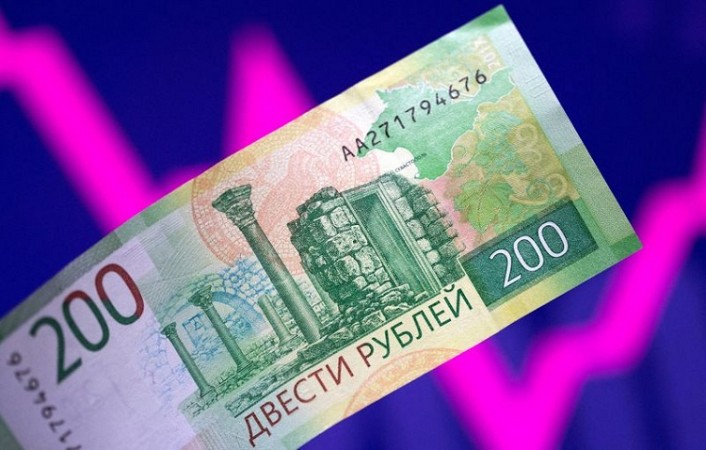
The Russian ruble experienced a slight rebound against the US dollar and the Chinese yuan on Thursday, although it remained just above its two-week low. There was a modest recovery against the euro as well. Analysts noted that the ruble's performance was still being influenced by the anticipation of reduced foreign currency sales by exporters following the completion of their end-of-month tax obligations.
Another contributing factor was the decreased trading of US dollars and euros. This shift came as a result of Russia's efforts to diversify the currencies used for pricing its exports of raw materials. Moscow has been promoting this strategy as part of its response to the economic sanctions imposed by Western countries. As of 9:47 AM GMT, the ruble had weakened by 0.2% against the dollar, trading at 96.44, while strengthening by 0.2% against the euro, reaching 105.08. Against the yuan, it had declined by 0.2% to 13.20.
Earlier, the ruble had reached its lowest levels since August 16th, with exchange rates at 96.66 per dollar, 105.60 per euro, and 13.22 per yuan. Meanwhile, Brent crude oil, a significant global benchmark for Russia's primary export, had risen by 0.26% to $86.08 per barrel.
In the realm of stocks, there was a positive trend. The dollar-denominated RTS stock index had gained 0.3%, reaching 1,055 points. Simultaneously, the rouble-based MOEX Russian index had increased by 0.5% to reach 3,229 points.
International Markets: At the opening hour on Thursday, European markets exhibited a varied performance. The British FTSE displayed a slight decline of 0.08 percent in its latest trading figures. The French CAC, on the other hand, experienced a 0.1 percent decrease, while the German DAX, the largest European market in terms of volume, demonstrated an increase of 0.18 percent.
During the prior session, the European indices predominantly concluded with lower values. The DAX saw a decline of 0.2 percent, contrasting with the FTSE, which saw a minor gain of 0.1 percent.
Conversely, the Wall Street indices managed to extend their upward trajectory for the fourth consecutive day in the previous session. The Dow Jones Industrial Average (Dow) achieved a 0.1 percent increase, while the S&P 500 and the Nasdaq Composite closed even higher with gains of 0.38 percent and 0.54 percent, respectively.
Japan's Economic Growth Slows to 0.5% in Q2 2023 Amidst Complex Challenges
US Economic Growth Slows to 1.7% in Q2 2023 Amid Complex Web of Factors